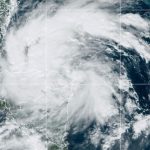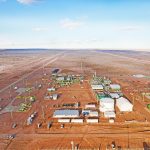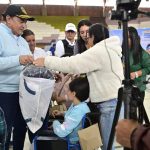Nov. 14 () –
A new technique that separates the external and internal DNA of cells has allowed the identification of a variety of living and possibly active microbes in the Atacama, the driest desert on Earth.
The Atacama Desert, which extends along the Pacific coast of Chile, is the driest place on the planet and, largely because of that aridity, hostile to most living things. But studies of sandy soil have revealed diverse microbial communities. However, studying the function of microorganisms in these habitats is challenging, because it is difficult to separate the genetic material of the living part of the community from the genetic material of the dead.
In Applied and Environmental Microbiologyan international team of researchers describes a new way to separate extracellular (eDNA) from intracellular (iDNA) genetic material. The method provides better insights into microbial life in low-biomass environments, which was not previously possible with conventional DNA extraction methods, said Dirk Wagner, Ph.D., a geomicrobiologist at the GFZ German Research Center for Geosciences in Potsdam. , who led the study.
The microbiologists used the novel approach on Atacama soil samples collected in the desert along a west-to-east strip from the edge of the ocean to the foothills of the Andes mountain range. Their analyzes revealed a variety of live and possibly active microbes in the most arid areas. A better understanding of environmental DNA and biological DNA, Wagner said, can help researchers investigate all microbial processes.
“Microbes are the pioneers that colonize this type of environment and prepare the ground for the next succession of life,” Wagner said. These processes, he said, are not limited to the desert. “This could also apply to new terrain that forms after earthquakes or landslides where you have more or less the same situation, a mineral or rock-based substrate.”
Most commercially available tools for extracting DNA from soils leave behind a mixture of live, dormant and dead microorganism cells, Wagner said. “If you extract all the DNA, you have DNA from living organisms and also DNA that may represent organisms that have just died or died a long time ago.” Metagenomic sequencing of that DNA can reveal specific microbes and microbial processes. However, it requires enough good quality DNA, Wagner added, “which is often the bottleneck in low biomass environments.”
To remedy that problem, he and his collaborators developed a process to filter intact cells from a mixture, leaving behind genetic fragments of eDNA left over from dead cells in the sediment. It involves multiple gentle rinse cycles, he said. In laboratory tests, they found that after 4 repetitions, almost all of the DNA in a sample had split into the 2 groups.
When they analyzed soil from the Atacama Desert, they found Actinobacteria and Proteobacteria in all samples in both the eDNA and iDNA groups. That’s not surprising, Wagner said, because living cells constantly replenish the iDNA reservoir as they die and degrade. “If a community is really active, then constant renewal is taking place, and that means that the 2 groups should be more similar to each other“he said. In samples collected less than 5 centimeters deep, they found that Chloroflexota bacteria dominated in the iDNA group.
In future work, Wagner said he plans to perform metagenomic sequencing on the iDNA samples to better understand the microbes at work and apply the same approach to samples from other harsh environments. By studying iDNA, he said, “you can get deeper information about the actual active part of the community.”













Add Comment